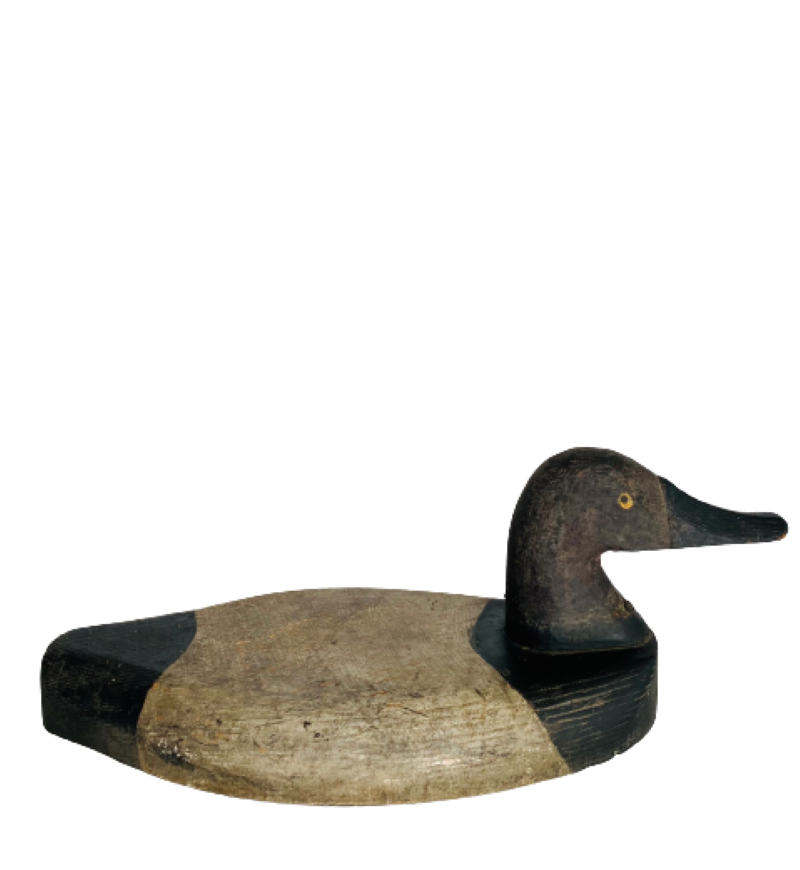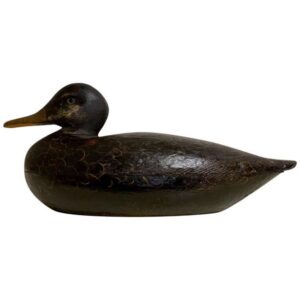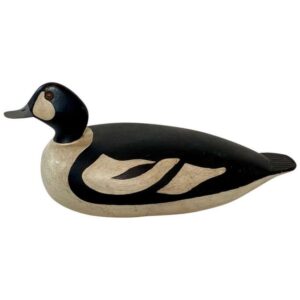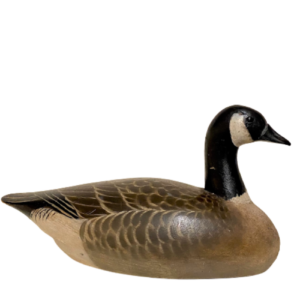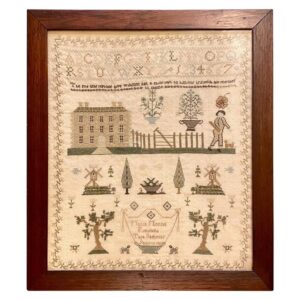Early Chesapeake Bay Scaup Drake Sink Box Wing Decoy, circa 1940
Early Chesapeake Bay Scaup Drake Sink Box Wing Decoy, circa 1940
$600.00
Early Chesapeake Bay Scaup Drake Sink Box Wing Decoy, circa 1940, a very shallow flat bodied decoy in original condition and original black and white paint.and painted eyes. In very fine used condition and dry untouched finish.
In stock
Early Chesapeake Bay Scaup Drake Sink Box Wing Decoy, circa 1940, a very shallow flat bodied decoy in original condition, original black and white paint on head and body, and painted eye (the right one remains strong, the left one has worn away). In very fine used condition and dry untouched finish.
Measures: 5-1/2 in H x 14-3/4 in L x 6-1/2 in W
Wing duck decoys were carved with very shallow flat bodies to sit atop the wings of a sink box and still look natural as if most of the body was beneath the water. A sink box was a floating raft just barely at the surface, holding a submerged box to hold the hunter hidden just below the water level: in effect a free-floating submerged hunting blind. The box was anchored in the center of an extensive rig of decoys that would number in the hundreds. The wing ducks were laid out to merge the sink box into the rest of the raft of decoys. Some were made of cast iron, quite heavy, to help submerge and balance out the sink box as ballast. Wing ducks are pretty scarce in comparison to the abundant decoys deployed in the large surrounding rig.
Sink boxes were very dangerous and liable to flip or sink with the entrapped hunter. But they were so effective that states soon began to restrict or even prohibit their use. By 1839, New York prohibited the use of sink boxes. From 1852 to 1897, other states such as Ohio, Michigan, Illinois, and New Jersey banned their use as well. Eventually they were outlawed in all of the United States under federal law.

